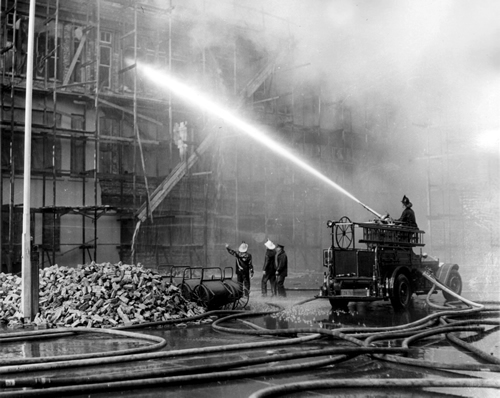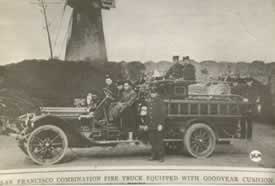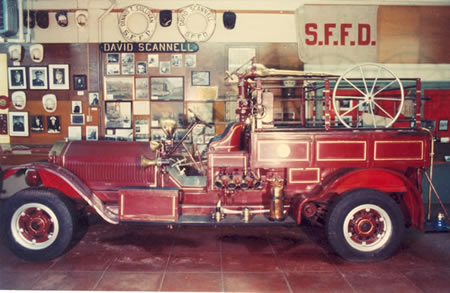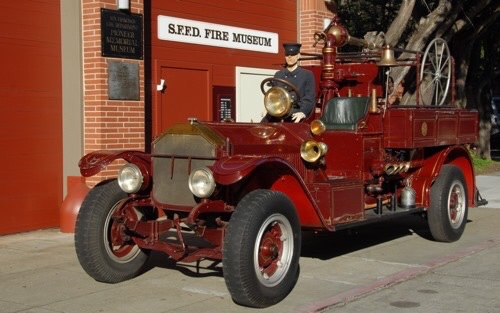
- Guardians Home
- SFFD Home
- Site Map
- Historical Review
- Apparatus
- Chiefs of Department
- Chronology
- Charles H. Ackerson
- Charles J. Brennan
- Keith P. Calden
- Andrew C. Casper
- Emmet C. Condon
- Robert L. Demmons
- John H. Dougherty
- Charles P. Duane
- Joanne M. Hayes-White
- George H. Hossefross
- Francis P. Kelly
- Frederick D. Kohler
- Joseph A. Medina
- Thomas R. Murphy
- William F. Murray
- Jeanine Nicholson
- Edward J. Phipps
- David Scannell
- Patrick H. Shaughnessy
- Albert J. Sullivan
- Dennis T. Sullivan
- Paul J. Tabacco
- Mario H. Trevino
- Edward P. Walsh
- Franklin E. R. Whitney
- Companies
- Events
- Past Events
- SFFD 150th Anniversary
- PPIE 100th Anniversary
- 1906 Expo
- 1989 Quake Party - 2009
- 65' Ladder Presentations
- Broderick & Terry Duel
- Coit Tower 75th Anniversary
- Cole Valley Fair
- Gold Hydrant - April 18th
- Jimmy's Car Show
- Lower Haight Street Fair
- Lotta's Fountain - April 18th
- Musters
- Presidio Car Show
- Station 28 75th Anniversary
- Fireboats
- Firehorses
- Firehouses
- Fires
- In The Line Of Duty
- Museum Collections
- Musters
- Notable People
- Organizations
- Gift Shop
- Volunteers
- Related Links
- Contact Us
- Research Requests
- Photo Gallery
- Videos
- Donations
Museum Collections: Apparatus - Hose Tender Co. No. 6: |
|
1914 American LaFrance, Type 12, Chemical and Hose Cart, Elmira, New York |
|
 |
|
 1921 as the companion hose car to Engine Co. No. 45. Photo taken in Golden Gate Park near Ocean Beach. |
 |
Builder: American LaFrance, with a 6 cylinder 100 HP motor and one 35 gallon, soda-acid chemical tank Manufacturer's Number: *548 *At this time the American LaFrance Company used registration numbers in the 500's for leased apparatus. This unit was shipped to San Francisco for the fire protection at the Panama-Pacific International Exposition; however it was not stationed there and was accepted into the SFFD upon its arrival. The registration number was never changed. Motor Number: 266 SFFD Shop Number: CW-13 (CW used for Chemical Engines) Location: Museum Condition: Very good, preserved Crew: Driver, and on occasions, an officer Members of hose tender companies could be identified at fires and other emergencies by their all black helmets. Service History: 1914 Delivery date in San Francisco, July 2, 1914
This apparatus was delivered to the Department as a combination Chemical and Hose Car. A 35 gallon chemical tank was located under the driver's seat and was connected to a hose reel of 300 feet of 1 inch hard rubber chemical hose. The hose bed carried at least 800 feet of regular large line hose. Chemical tanks are like large fire extinguishers and can vary in size from 20 to100 gallons each. They first came into use during the hand drawn apparatus period of firefighting mounted on two wheeled carts. When horse drawn apparatus entered the fire service, tanks of 40 to 50 gallons each, were placed on four wheel wagons. With the change over to motorized units, the sizes of the tanks were increased. At one time there were fourteen motorized chemical engines in the Department, each carrying two 80 to 100 gallon chemical tanks. These chemical units were used to get quick streams of water on a fire thus eliminating the time used to set up a hand engine for operation, or to wait for a steam engine to build the required steam pressure before it could operate, or for the crew of a motorized pumping engine, without a water tank, to make their hose leads and connections. Each chemical tank contained a measured amount of bicarbonate of soda, sulfuric acid, and water to generate a pressure and to force the fluid through the hose when the nozzle was opened. Either hand drawn, horse drawn or motorized, all were called chemical companies. In 1922 this unit was converted to a straight hose tender by the Fire Department Corporation Yard at 52 Francisco Street between Powell and Stockton Streets. The chemical tank was removed and a Gorter high pressure monitor installed. The new hose bed carried 1,000 feet of large line 2 ¾ inch hose with 3 inch NST (National Standard Thread) brass couplings. The apparatus also carried a 100 foot bundle of 1 ¾ inch small line hose with SFFD Square Thread couplings with a McLaughlin nozzle attached. The SFFD Square Tread coupling, because of its unique design, was easy to connect quickly and was very rarely cross-threaded. It was not until the 1980's, when the State of California ordered the Department to change their small line to 1½ inch hose with NST couplings that the SFFD Square Thread hose was removed from service. At least one, and at some industrial alarm box locations two hose tenders would respond on a first alarm assignment. In general, hose tender companies were placed into operation at greater alarms of fire. After reporting in and receiving his orders from the Chief, the driver would find an available high pressure hydrant. At the hydrant he would place two Gleason reducing values on the ground, take two large lines from the hose bed using the rope harness, looping the rope over the hydrant, and then drive to his ordered location near the fire. At the hydrant other firemen would make the Gleason value and hose connections to speed the process of getting the hose tender into operation. If there was need for a larger supply of water, additional hose leads would be made from other high pressure hydrants or nearby engines. All Department hose tenders had eight inlets to supply water to the Gorter monitor. In full operation, the Gorter monitor can place a water flow of 1,750 gallons per minute onto a fire. The set of nozzle tips carried on this unit are: 1 ½, 1 ¾, 2, and 2 ½ inches. When Chief of Department William Murray was making plans to form a department museum in 1963, he tried to find the chemical apparatus that he drove as a young fireman. When the Department was changing over from horse drawn apparatus to motorized units, Chief Murray was one of the few members of the Department who had ever driven a car or a truck. One of his first assignments was to train other members how to drive the new motorized apparatus. After doing some research, the Chief learned that his chemical engine had been sold at pubic auction six months earlier. He then found that Hose Tender No.6 at the San Francisco Airport was the oldest motorized apparatus still on department roles. Chief Murray placed the hose tender out of service and had it transferred to the Museum for its opening in 1964. It is the plan of the SFFD Historical Society to maintain this hose tender in its preserved status and return the unit to operating condition. Volunteer members of the Society are at present working on this project. Equipment Carried: 1,000 feet large line, 2 ¾ inch cotton rubber lined hose with 3 inch brass NST couplings, 100 feet 1 ¾ inch small line with 1 ¾ inch brass SFFD Square Thread couplings and a McLaughlin nozzle. (These two fifty foot lengths of small line were rolled to make what is known in the fire service as a “bundle”). 2 Gleason high pressure reducing values, 4 sets of 3 inch double female and double male fittings, 1 hose lead rope hydrant harness, 1 three piece high pressure hydrant shut off value set, a wheel, shut off bar and extension, 1 12 foot wooden straight ladder, one 14 foot extension ladder, one 6 gallon Babcock water extinguisher, one set of four nozzle tips of 1 ½, 1 ¾, 2, and 2 ½ inches and various hydrant and hose spanners and one engine hand crank handle. ALSO SEE: Museum Collection Hose Tender Co. No. 6 Restoration - Repair |
|


